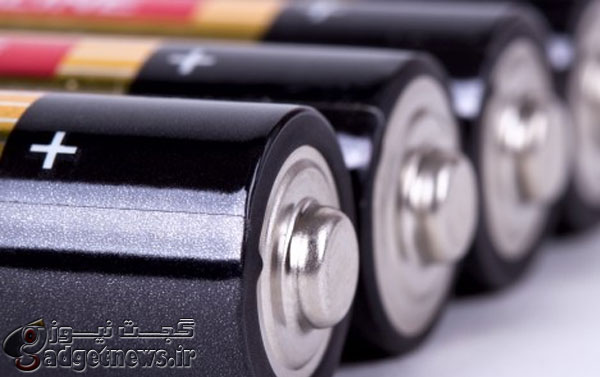
باتریهای لیتیوم-یون، ساخت وسایل الکترونیکی قابل حمل و قابل شارژ را ساده کردهاند. متاسفانه، این باتریها دارای نقصهای جدی مانند مشکلات گرم شدن، ساخته شدن از عناصر نادر و سمی هستند و باید این واقعیت را نیز در نظر داشت که این تکنولوژی به خوبی رشد نکرده است که این مساله موجب محدودیت در کاربردهای آن میشود. گروهی از پژوهشگران دانشگاه کالیفرنیای جنوبی (USC) در حال کار بر روی ساخت جانشینی به شکل باتریهای ارگانیک مبتنی بر آب برای باتریهای لیتیوم-یون هستند که نه تنها ارزانتر باشد و سازگاری بیشتری با محیط زیست داشته باشد، بلکه پتانسیل استفاده در نیروگاههای بادی و خورشیدی را نیز جهت ذخیرهی انرژی قابل توجه داشته باشد.
تکنولوژی توسعه یافته توسط گروه USC، اندکی شبیه به پیل سوختی است که مدل مشابه آن برای پهپادهای الکتریکی Helios ناسا ساخته شده بود. این نوع باتری متشکل از دو مخزن شامل مواد شیمیایی الکترواکتیو است. این مواد به درون سلولهایی که توسط یک غشا از هم جدا هستند، پمپ میشوند. این مواد سپس با غشا وارد واکنش شده و الکتریسیته تولید میشود.
بنا به اعلام گروه تحقیقاتی، مخزنها قادر به ساخت در هر اندازهای در مقایسه با سلولها هستند، از این رو مقدار کل انرژی که سیستم قادر به ذخیرهسازی آن است، بستگی به اندازهی مخزنها خواهد داشت که در باتریهای معمولی اینطور نیست. چنین باتریهایی همچنین دارای عمر بهتری نسبت به باتریهای لیتیوم-یون و انواع آن هستند.
سیری نارایان، استاد شیمی دانشگاه USC Dornsife میگوید: “این باتریها قادر به اجرای چرخهی 5000 تایی شارژ هستند که به آنها عمر تقریبا 15 ساله میبخشد.” وی سخنان خود را چنین ادامه داد: “عمر باتریهای لیتیوم-یون تقریبا پس از 1000 بار شارژ کاهش مییابد و همچنین ده برابر این باتریهای جدید برای تولیدکننده هزینه دارد.”
از ویژگیهای کلیدی باتری جدید، استفاده از مواد الکترواکتیو در آن است. به جای فلز یا دیگر مواد سمی، گروه تحقیقاتی USC از ترکیبات ارگانیک استفاده کرده است. این پژوهشگران با سعی و خطا قادر به توسعهی مادهای بر اساس ترکیبات ارگانیک اکسیده شده با نام کوئینون شدند که در گیاهان، قارچها، باکتریها و برخی از حیوانات یافت میشود و در تنفسهای سلولی و فتوسنتز مشارکت دارند.
به طور خاص، کوئینونهای مورد استفاده در باتری جدید آنترا کوئینون 2 سولفونیک اسید یا آنترا کوئینون 2,6- دیسولفونیک اسید در بخش منفی، و 1,2-دیهیدروبنزوکوئینون- 3,5-دیسولفونیک اسید در بخش مثبت سلول هستند.
گروه تحقیقاتی دانشگاه کالیفرنیا، این پروژه را به عنوان پیشروی تکنولوژی در آینده میبیند که قابل استفاده به عنوان باتریهای مگاسایز مقرون به صرفه هستند. کوئینون مورد استفاده در این باتریها به صورت طبیعی از هیدروکربنها تولید میشود، اما این گروه امیدوار است که روزی بتوان آنها را مستقیما از کربندیاکسیدها استخراج کرد. با این حال، هدف فعلی این گروه پیشرفت سریعتر این تکنولوژی به منظور کاربردی ساختن آن است.
یافتههای این گروه در مجلهی Electrochemical Society به چاپ رسیده است.
منبع : gizmag
New water-based organic battery is cheap, rechargeable and eco-friendly
Lithium-ion batteries have made portable, rechargeable electronics commonplace. Unfortunately, they do have some glaring drawbacks, including heat issues, being made with rare, toxic elements, and the fact the technology doesn’t scale up very well, which limits applications. A team of scientists at the University of Southern California (USC) is working on an alternative in the form of a water-based organic battery that is not only cheaper and more environmentally friendly, but also holds the potential for scaling up for use in wind and solar power plants as a means to store large amounts of energy.
The technology developed by the USC team is what’s called an organic redux flow battery. It’s a bit like a fuel cell, and a similar one was developed for NASA’s Helios electric-powered drones. It consists of two tanks containing solutions of electroactive chemicals. These are pumped into a cell, which is divided by a membrane. The solutions interact through the membrane and electricity is produced.
According to the team, the tanks can be of any size in comparison to the cells, so the total amount of energy that the system can store depends on how large the tanks are, which is one up on conventional batteries. The flow battery also has a better life span than lithium-ion batteries and its variants.
“The batteries last for about 5,000 recharge cycles, giving them an estimated 15-year lifespan,” says Sri Narayan, professor of chemistry at the USC Dornsife College of Letters, Arts and Sciences. “Lithium ion batteries degrade after around 1,000 cycles, and cost 10 times more to manufacture.”
The key to the new flow battery is the electroactive materials used. Instead of metals or other toxic materials, the USC team used organic compounds. By trial and error, the researchers were able to develop materials based on oxidized organic compounds called quinones, which are found in plants, fungi, bacteria, and some animals and involved in photosynthesis and cellular respiration.
Specifically, the quinones used in the new battery are anthraquinone-2-sulfonic acid or anthraquinone-2,6-disulfonic acid on the negative side, and 1,2-dihydrobenzoquinone- 3,5-disulfonic acid on the positive side of the cell.
The team sees the technology as one day leading to large “mega-scale” battery banks that are cost-effective and environmentally friendly. The quinones used in the flow battery are currently produced from naturally occurring hydrocarbons, but the team hopes one day to derive them directly from carbon dioxide. However, the immediate goal of the team is to scale up the technology to make it more practical.
The team’s findings were published in the Journal of the Electrochemical Society.
 گجت نیوز آخرین اخبار تکنولوژی، علم و خودرو
گجت نیوز آخرین اخبار تکنولوژی، علم و خودرو 





